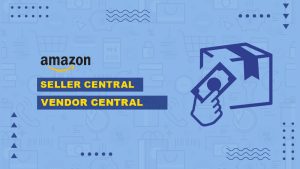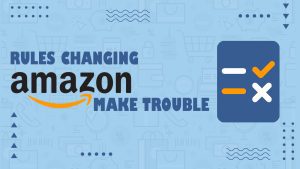Introduction
E-commerce is one of the fastest-growing and most profitable industries in the world. According to Statista, global e-commerce sales reached $5.7 trillion in 2022, and are expected to grow to $8 trillion by 2026. E-commerce offers many benefits for entrepreneurs, such as low start-up costs, high scalability, wide reach, and customer convenience.
However, starting an e-commerce business is not as easy as it sounds. You need to plan, research, and execute your business idea carefully and strategically, to stand out from the competition and succeed in the online marketplace. You also need to overcome various challenges and risks, such as technical issues, legal compliance, customer service, and marketing.
To help you start your e-commerce business on the right foot, we have compiled 10 essential tips that cover every aspect of your online venture, from choosing your products and platform, to optimizing your website and promoting your brand. Here are the 10 tips that you need to follow:
- Choose a niche and validate your product idea
The first and most important step in starting an e-commerce business is to choose a niche and validate your product idea. A niche is a specific segment of the market that has a distinct need, problem, or preference. A product idea is a solution that you offer to your niche audience.
Choosing a niche and validating your product idea will help you:
- Identify your target customers and their pain points.
- Differentiate yourself from your competitors and create a unique value proposition.
- Estimate the demand and profitability of your product.
- Reduce the risk of launching a product that no one wants or needs.
To choose a niche and validate your product idea, you can:
- Conduct market research and analysis, using tools like Google Trends, Keyword Tool.Dominator, or Ahrefs, to find popular and profitable niches and keywords.
- Survey and interview your potential customers, using tools like SurveyMonkey, Typeform, or Google Forms, to understand their needs, preferences, and feedback.
- Test and refine your product idea, using tools like Shopify, WooCommerce, or Wix, to create a landing page, a prototype, or a minimum viable product (MVP), and measure the response and conversion rate.
- Choose a business model and name
The next step in starting an e-commerce business is to choose a business model and name. A business model is the way you deliver and sell your products to your customers. A business name is the identity and brand of your e-commerce business.
Choosing a business model and name will help you:
- Determine the operational and financial aspects of your e-commerce business, such as inventory, fulfillment, pricing, and revenue.
- Create a memorable and catchy name that reflects your niche, product, and value proposition.
- Register and protect your e-commerce business legally and professionally.
To choose a business model and name, you can:
- Evaluate the pros and cons of different e-commerce business models, such as business-to-consumer (B2C), business-to-business (B2B), customer-to-customer (C2C), or customer-to-business (C2B), and different delivery methods, such as direct-to-consumer (D2C), drop shipping, or wholesale.
- Brainstorm and generate potential business names, using tools like Shopify Business Name Generator, Namelix, or Squadhelp, to find creative and available names.
- Check the availability and register your business name, domain name, and social media handles, using tools like Namechk, GoDaddy, or Namecheap, to secure your online presence and avoid trademark issues.
- Choose an e-commerce platform and create your website
The third step in starting an e-commerce business is to choose an e-commerce platform and create your website. An e-commerce platform is the software or service that powers your online store and enables you to manage your products, orders, payments, and customers. A website is the online storefront and interface of your e-commerce business.
Choosing an e-commerce platform and creating your website will help you:
- Build and launch your online store quickly and easily, without coding or technical skills
- Customize and optimize your website design, layout, and functionality, to suit your niche, product, and brand.
- Provide a smooth and seamless shopping experience for your customers, to increase your conversion and retention rates.
To choose an e-commerce platform and create your website, you can:
- Compare and contrast different e-commerce platforms, such as Shopify, WooCommerce, or Wix, to find the best one for your needs, budget, and preferences.
- Follow the steps and guidelines provided by your chosen e-commerce platform, to set up your website, add your products, and configure your settings.
- Use best practices and tips for e-commerce website design, such as using clear and high-quality images, writing compelling and SEO-friendly product descriptions, adding trust signals and social proof, and creating a simple and intuitive navigation and checkout process.
- Optimize your website for SEO and usability
The fourth step in starting an e-commerce business is to optimize your website for SEO and usability. SEO stands for search engine optimization, which is the process of improving your website’s visibility and ranking in search engines like Google or Bing. Usability stands for user experience, which is the process of improving your website’s performance and functionality for your visitors.
Optimizing your website for SEO and usability will help you:
- Drive more organic and relevant traffic to your website, from people who are searching for your products or niche.
- Increase your click-through and conversion rates, by providing clear and helpful information, and solving your customers’ problems.
- Reduce your bounce and abandonment rates, by providing fast and reliable loading speed, and eliminating errors and bugs.
To optimize your website for SEO and usability, you can:
- Perform keyword research and analysis, using tools like Google Keyword Planner, Ahrefs, or Moz, to find and target the most relevant and profitable keywords for your niche and product.
- Optimize your website architecture and URLs, using tools like Screaming Frog, Sitebulb, or Ahrefs, to create a logical and hierarchical structure, and use descriptive and SEO-friendly URLs.
- Optimize your on-page and off-page SEO, using tools like Yoast SEO, Rank Math, or Ahrefs, to optimize your title tags, meta descriptions, headings, content, images, internal and external links, and social media signals.
- Set up your payment and shipping methods
The fifth step in starting an e-commerce business is to set up your payment and shipping methods. Payment methods are the ways you accept and process payments from your customers, such as credit cards, PayPal, or Stripe. Shipping methods are the ways you deliver and ship your products to your customers, such as USPS, FedEx, or UPS.
Setting up your payment and shipping methods will help you:
- Provide convenience and security for your customers, by offering multiple and reliable payment and shipping options.
- Increase your sales and revenue, by reducing cart abandonment and increasing customer satisfaction and loyalty.
- Manage your cash flow and inventory, by tracking and fulfilling your orders and payments efficiently and accurately.
To set up your payment and shipping methods, you can:
- Choose and integrate the best payment gateways and processors for your e-commerce business, using tools like Shopify Payments, WooCommerce Payments, or Wix Payments, to accept and process payments from your customers.
- Choose and integrate the best shipping carriers and providers for your e-commerce business, using tools like Shopify Shipping, WooCommerce Shipping, or Wix Shipping, to deliver and ship your products to your customers.
- Calculate and set your shipping rates and policies, using tools like Shopify Shipping Calculator, WooCommerce Shipping Calculator, or Wix Shipping Calculator, to determine the best shipping costs and methods for your products and customers.
- Set up your analytics and tracking tools
The sixth step in starting an e-commerce business is to set up your analytics and tracking tools. Analytics and tracking tools are the software or services that help you collect and analyze data and insights from your website and customers, such as Google Analytics, Google Tag Manager, or Hotjar.
Setting up your analytics and tracking tools will help you:
- Understand your website and customer behavior, by measuring and monitoring your key metrics and KPIs, such as traffic, conversions, sales, retention, and ROI.
- Identify your strengths and weaknesses, by testing and experimenting with different elements and variables, such as design, layout, content, or offers.
- Improve your website and customer experience, by making data-driven decisions and actions, based on your findings and insights.
To set up your analytics and tracking tools, you can:
- Choose and install the best analytics and tracking tools for your e-commerce business, using tools like Google Analytics, Google Tag Manager, or Hotjar, to collect and analyze data and insights from your website and customers.
- Set up and configure your analytics and tracking tools, using tools like Google Analytics, Google Tag Manager, or Hotjar, to create and customize your goals, events, segments, reports, and dashboards.
- Use and optimize your analytics and tracking tools, using tools like Google Analytics, Google Tag Manager, or Hotjar, to track and measure your performance and results, and optimize your website and customer experience.
- Launch your website and test your functionality
The seventh step in starting an e-commerce business is to launch your website and test your functionality. Launching your website is the process of making your website live and accessible to the public. Testing your functionality is the process of checking and verifying your website’s performance and functionality, such as loading speed, security, compatibility, and usability.
Launching your website and testing your functionality will help you:
- Ensure that your website is ready and working properly, before you start marketing and selling your products.
- Create and implement a marketing strategy for your website and products, using tools like Google Ads, Facebook Ads, or Shopify Marketing, to create and run online ads, campaigns, or promotions, and reach and attract your target customers.
- Monitor and evaluate your website and products, using tools like Google Analytics, Google Tag Manager, or Hotjar, to track and measure your traffic, conversions, sales, retention, and ROI, and identify your strengths and weaknesses.
- Grow and scale your e-commerce business
The eighth and final step in starting an e-commerce business is to grow and scale your e-commerce business. Growing and scaling your e-commerce business is the process of increasing your customer base, revenue, and profit, and expanding your product range, market, and operations.
Growing and scaling your e-commerce business will help you:
- Achieve your business goals and objectives, such as increasing your market share, brand awareness, customer loyalty, or competitive advantage.
- Adapt and respond to the changing needs and preferences of your customers, market, and industry, and stay ahead of the curve and the competition.
- Maximize your potential and opportunities, and create more value and impact for your customers, partners, and stakeholders.
To grow and scale your e-commerce business, you can:
- Optimize and improve your website and products, using tools like Google Analytics, Google Tag Manager, or Hotjar, to analyze your data and insights, and make data-driven decisions and actions, based on your findings and feedback.
- Diversify and expand your product range, market, and operations, using tools like Shopify, WooCommerce, or Wix, to add new or complementary products, enter new or existing markets, or outsource or automate your operations.
- Leverage and collaborate with other e-commerce businesses, platforms, or influencers, using tools like Shopify, WooCommerce, or Wix, to create and join partnerships, alliances, or networks, and increase your exposure, reach, and sales.
Conclusion
Starting an e-commerce business is a rewarding and lucrative venture that can offer you many benefits and opportunities. However, starting an e-commerce business also requires a lot of planning, research, and execution, to overcome the challenges and risks, and succeed in the online marketplace.
To start your e-commerce business, you need to follow these essential tips, that cover every aspect of your online venture, from choosing your niche and product, to growing and scaling your business. These tips will help you create and launch your online store, optimize and improve your website and products, and market and promote your brand and products.
We hope that this blog post has helped you start your e-commerce business and inspired you to pursue your e-commerce dreams. If you are looking for a reliable and reputable e-commerce platform that can help you create and manage your online store, look no further than eStores Expert. We are here to make your e-commerce dreams come true. Contact us today and let us help you grow your online presence and sales.
Happy selling!





